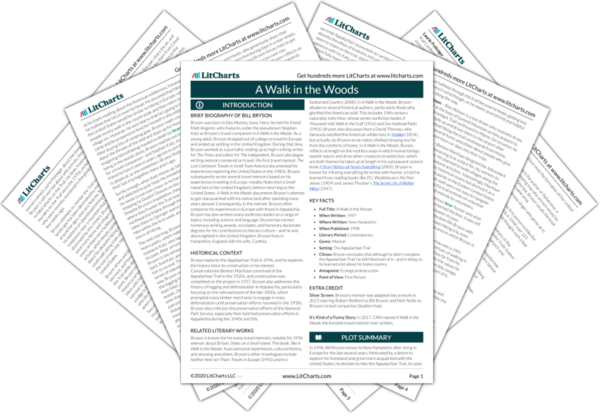Bryson has been building up to the idea that the United States thinks of its land as “either” remote and rugged wilderness that can’t be touched, “or” ugly industrialized land that can be completely exploited, with no middle ground. Now, he makes his argument explicit. He compares his experiences on the Trail to his experiences in Luxembourg, where the middle ground—rural environments like farms and villages—has been preserved. He decides that such environments are far more hospitable to people who want to enjoy nature. They allow people to explore natural environments that blend more seamlessly with everyday life, and Bryson thinks that this approach makes a lot more sense. He’s disappointed to find nothing like this approach the Trail.
